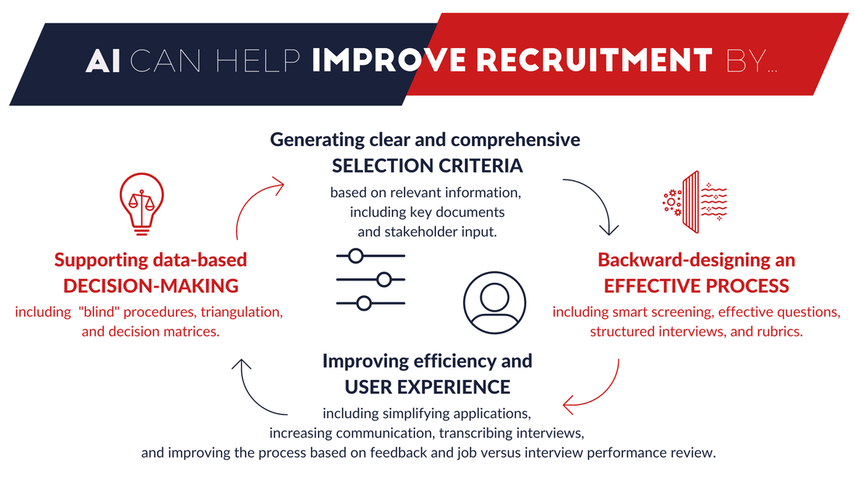 Some time ago, I reviewed the main reasons why traditional job interviews don’t work (Schmidt and Hunter, 1998; Young and Delli, 2002), i.e., are very poor predictors of future job performance, and proposed ways to improve the teacher (and leader) recruitment process by employing what schools know to be best practices in evaluation. Since then, the rapid spread of generative AI tools has made these recommendations easier to adopt and likely even more effective. As transformative as they could be in the classroom for student learning, the benefits of chatbots might be just as considerable “in the offices” for school leadership. Why Job Interviews Don't Work The gist of the original article was that a series of filters separate the final choice made by a school from the actual “quality” of different candidates. A first filter has to do with the nature of the job interview process, which does not directly assess job aptitude. In the future, AI might make it easier to evaluate a candidate’s actual job perfomance. For now, job interviews can still only assess a candidate’s ability to answer job interview questions--i.e., their capacity, not to do the job, but to talk about it. Second, not only do we have to make hiring choices based on very unreliable information, but our ability to process it is questionable as well. To put is simply, the issue faced by hiring managers in a school context is that determining the “best” among a pool of candidates requires the collection and analysis of information that is too fuzzy for our brains to process rationally. As a consequence, selection processes tend to rely heavily on highly convincing (or “intuitive”), but also highly deceiving (or “biased”), proxies and heuristics. While some disregard as unnecessary and too constraining the kind of guidelines that could help ensure system 2 is in use (creating rubrics ahead of time, structuring interviews, etc.), many are aware that this would be better practice–if we only had the time to create and implement them. How AI Can Help Fortunately, this is where generative AI can help, thanks to its ability to process vast amounts of nominal data and, properly prompted, to speed up slow thinking. As can be seen in the diagram below, the integration of AI into the recruitment process can bypass many of the filters mentioned above. Not only by clarifying success criteria, but also by strengthening data collection and interpretation, as well as decision-making. Far from making the process impersonal, it can actually help improve user experience--and avoid many of the biases embedded in human interactions, such as the susceptibility to irrelevant social markers and personality cues (familiarity effect, halo effect...). Of course, AI is not without bias: it comes programmed with some of our assumptions; but this means that we have the sames biases it has–and more. For that reason, it is both true that AI can be used to check biases in hiring, and that it should only be used as a tool, and with proper critical thinking.
While the initial article only looked at job interviews, AI can be of assistance at every step of the recruitment process. Would it not be at least interesting to see who a robot shortlists from a pool of candidates (think pile of CVs), and compare it to who we chose? Isn't it possible that its superpowered word-crunching catch something we missed--be it a line, or something between the lines, that shows great promise? There is of course no need to try all that AI can do at once. But why not try some of it? With proper guidelines, the risks are low, and so is the cost, especially compared to the potential benefits.
0 Comments
Your comment will be posted after it is approved.
Leave a Reply. |
|
Proudly powered by Weebly

